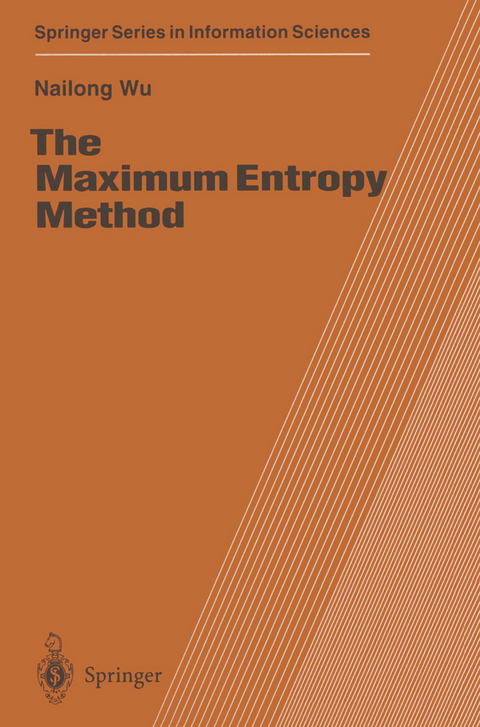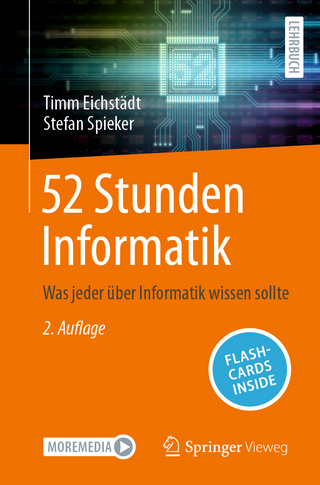
The Maximum Entropy Method
Springer Berlin (Verlag)
978-3-642-64484-9 (ISBN)
1. Introduction.- 1.1 What is the Maximum Entropy Method.- 1.2 Definition of Entropy.- 1.3 Rationale of the Maximum Entropy Method.- 1.4 Present and Future Research.- 2. Maximum Entropy Method MEM1 and Its Application in Spectral Analysis.- 2.1 Definition and Expressions of Entropy H1.- 2.2 Formulation and Solution.- 2.3 Equivalents and Signal Model.- 2.4 Algorithms and Numerical Example (Given ACF).- 2.5 Algorithms and Numerical Example (Given Time Series).- 2.6 Order Selection.- 3. Maximum Entropy Method MEM2 and Its Application in Image Restoration.- 3.1 Definition and Expressions of Entropy H2.- 3.2 Formulation and Implicit Solution.- 3.3 Explicit Solution.- 3.4 Equivalents and Signal Model.- 3.5 R - ? Procedure.- 3.6 Algorithms and Numerical Examples (I).- 3.7 Algorithms and Numerical Examples (II).- 3.8 Algorithms and Numerical Examples (III).- 4. Analysis and Comparison of the Maximum Entropy Method.- 4.1 Generalized MEM.- 4.2 Expressions of Entropy.- 4.3 Solution's Properties.- 4.4 Resolution Enhancement and Data Extension (Experimental Results).- 4.5 Resolution Enhancement and Data Extension (Theoretical Analysis).- 4.6 Peak Location and Relative Power Estimation (Experimental Results).- 4.7 Peak Location and Relative Power Estimation (Theoretical Analysis).- 4.8 Comments on the Three Schools of Thought on MEM.- 5. Applications of the Maximum Entropy Method in Mathematics and Physics.- 5.1 Solution of Moment Problems.- 5.2 Solution of Integral Equations.- 5.3 Solution of Partial Differential Equations.- 5.4 Predictive Statistical Mechanics.- 5.5 Distributions of Particles Among Energy Levels.- 5.6 Classical Statistical Ensembles.- 5.7 Quantum Statistical Ensembles.- Appendices.- A. Cepstral Analysis.- A.1 Cepstral Analysis System.- A.2 I/O Relationship.-A.3 Properties of the Complex Cepstrum.- A.4 I/O Relationship for Minimum-Phase Input.- B. Image Restoration.- B.1 Image Formation.- B.2 Image Restoration.- B.3 Relationship Between Image Restoration and Spectral Estimation.- References.
| Erscheint lt. Verlag | 16.9.2011 |
|---|---|
| Reihe/Serie | Springer Series in Information Sciences |
| Zusatzinfo | XII, 327 p. |
| Verlagsort | Berlin |
| Sprache | englisch |
| Maße | 155 x 235 mm |
| Gewicht | 521 g |
| Themenwelt | Mathematik / Informatik ► Informatik ► Theorie / Studium |
| Naturwissenschaften ► Physik / Astronomie ► Mechanik | |
| Naturwissenschaften ► Physik / Astronomie ► Theoretische Physik | |
| Naturwissenschaften ► Physik / Astronomie ► Thermodynamik | |
| Schlagworte | ACF extension • AR process • Burg algorithm • differential equation • Energy • Entropy • Experiment • Maximum Entropy Method • Mechanics • other fast algristhms • Phase • Roots • Spectra • System • Wiener Filter |
| ISBN-10 | 3-642-64484-8 / 3642644848 |
| ISBN-13 | 978-3-642-64484-9 / 9783642644849 |
| Zustand | Neuware |
| Informationen gemäß Produktsicherheitsverordnung (GPSR) | |
| Haben Sie eine Frage zum Produkt? |
aus dem Bereich


